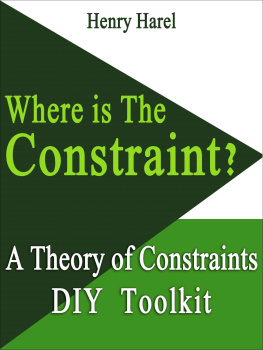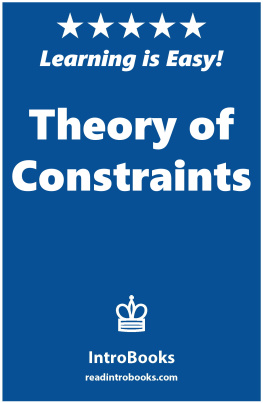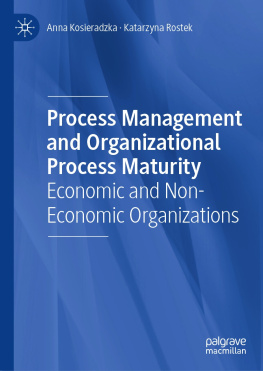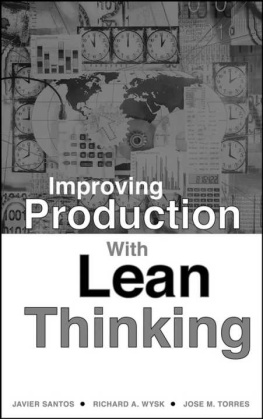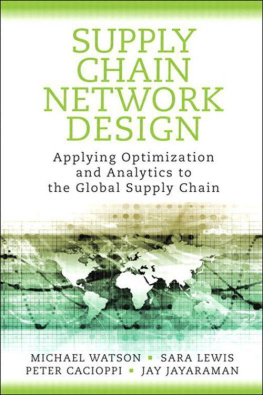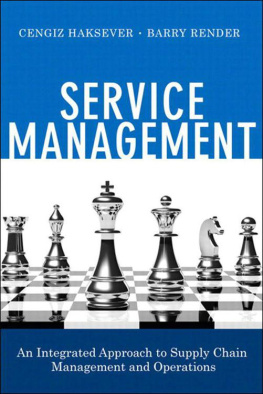The material in this book is not tobe copied, photographed, translated, stored electronically or broadcast by anymeans, opticallyor electronically. No commercial use may be made of any material in the bookwithout the expressed permission in writing from the author .
Introduction
Haveyou ever read a book so captivating that it made you want to be the protagonistor the main character in it? Solving production issues, improving productivity,and increasing profit seem so easy and so sensible! This happened to me when Iread The Goal about 25 years ago. Itled to a lasting career of consulting and management all over the world. Tothose who are not familiar, this is the story, and you can read the summary atthe appendix of this book. Summarizing the philosophy and practice of theTheory of Constrains (TOC), we can say that the basics are very simple. Everyorganization has one and only one constraint. That constraint can be either be physicalin the form of a bottleneck in production or virtual (yet very real) in theform of a rule. It hinders the company in its efforts to achieve the companysgoals.
In order to embark on a continuousimprovement process, there are five steps:
- Identify the constraint.
- Decide how to exploit the constraint.
- Subordinate and synchronize everything else to the above decisions.
- Elevate the performance of the constraint.
- If, in any of the above steps, the constraint has shifted, go back to Step 1.
Over the years, I was lucky torealize my ambition of the TOC in numerous industries, from garment productionto mining, from services to food distribution, and many others. The companieswere spread globallyIsrael, China, India, Japan, and Scotland are some ofthem. Today, while running my own ventures, I find it as a good place to sharethis knowledge. The one thing I found common is that in every organization, thereare several individuals who, even without any formal training in the TOC, are morethan capable of producing amazing results. This manual written is written forthem. It is the first of five, each of which covers one step in the continuous improvementprocess. To all who read it, I wouldlove to listen to your stories and advice. You can contact me via email at
Yes, but Is It a Constraint?
Ask ten colleagues what the problemwith your company is, and you will get at least twelve answers. Everyone has anopinion. Everyone is happy to point a finger at a problem in another departmentor a machine or whatever process that stops him from doing his or her jobright. It is not unique to low level or upper level management. Top C levelexecutives are notorious in this aspect. The first obstacle in applying acontinuous improvement process to your organization is locating the one constraint,and maybe the immediate one after it. However, in many cases, one goes afterhis own heart, believing that he knows what the problem is, or worse, he ismisled and ordered to "solve the problem of X" when actually there isno problem. Here are two examples of misdirection which will demonstrate therisk:
The Test Bench
Ina maintenance shop, repairing optical equipment, one of the items caused a lotof problems to the management. The customers were complaining that the repairtook too long, say, about a month. They were in great need for the equipment,so the maintenance process was done 24/7, working shifts and weekends. A longqueue of malfunctioning units awaited, and frustration hit the roof. Finally,they decided to solve the issue and asked the floor manager what he needed to speedup the work. His answer was: another test bench. To his opinion, it appeared tobe that the calibration took forever and was the longest process. So theinvestment (a huge one!) was made. I was sent in to assess what would be thenew lead time. As the case was, I just read TheGoal that month. Putting to use what I have learned, I realized that we hada linear process in which the unit went through, calibration being just onepart. There is a constant flow of units through the system. There is a bottleneck.But is the test bench the bottleneck? In order to find out, all I did was ask, Whatis the flow rate? In other words, How many units are repaired every week orevery month? The answer came inthirty per month. This led to the conclusionthat one was being repaired every day. As every unit was calibrated on the testbench, an undeniable conclusion was that on average, the time each unit spenton the bench was mostly a single day. The other undeniable conclusion was thatthe rest of the process took twenty-nine days, as the total repair time was thirtydays. So the conclusion of my calculation was somewhat unpleasant to themanager who signed the purchase order. The unit would not be out faster than twenty-ninedays. The test bench was definitely not the bottleneck. The result was a launchof a real TOC process, and personally, I started my own TOC journey leading tothis book.
The Print Press
Asmall publisher of printed material was not meeting the request of hiscustomerslate deliveries and products not in time to the market. As he owned twovery large print presses, he put the blame on the company which maintainedthem. He was reasonable; one of the presses was out of order most of the time,as it was unique and needed long deliveries of spare parts. I was sent by the maintenancemanger to see what we could do, maybe supply a stand-by press or any othersolution to levitate the production problem. Not familiar with the publishersbusiness, I walked straight into the print room. I was not surprised to findone press idle, covered with nylon wrapping, obviously not functioning. Theother two operators were preparing it and setting it up for the next load. Aftera short introduction, I asked them about the workload to see. The answer wasunexpected. While the rest of the organization was working in two shifts, they onlyhad one. Sometimes, they put in overtime, but it was the exception, not the rule.The reason was that the capacity of that single press was more than what theyneeded to complete everything that was thrown at them. Obviously, the faultypress was not the bottleneck. Yes, they had a faulty press, but even if thepress was fine, not a single one would be rushed. The pressure to repair thefaulty press was removed, and the publisher was finally aware that he had aproblem in the organization, where he believed there was none.
Conclusionand thumb rules for this chapter (and the next):
- Never ever trust opinions blindly. Check them all.
- Use raw data. I apply the motto, In God we trust. All the rest, bring data
- You need to have an "eagle eye" approach. The influence of a bottleneck is on the whole organization. You must see the whole organization through the bottleneck's impact.
- Do not be shy, especially if you are pointed in the wrong direction and are able to prove it. The rewards are great, both the internal and the external.
Manufacturing Constraints
The TOC was founded in theproduction environment. The production line, however complex, is usually verystraightforward to diagnose. First, you have to set the parameters you want toimprove. Usually, it will be lead time and due date compliance. Other morecomplex parameters may be inventory levels in the form of raw materials,inventory in process, and finished goods inventory. All of these influence thebottom line of the company. For example, leading a TOC initiative in a Chinesegarment factory, a team reduced the lead time, basically getting over 98% ofthe orders in time. It was done without increase in labor or machinery. As thecompany was one of several OEM manufacturers in China, the purchasers for thecompanies which used that factory as one of several others started divertingmore orders to them, resulting in an increase of over 30% in orders anddoubling the net profits in a year. There are two typical bottlenecks in aproduction line: (1) capacity issue; and (2) policy issue. One may stem fromthe other; however, both need to be treated. Capacity constraint is the"classical" bottleneck. Finding it is relatively easy: follow theproduction process and see where a pile of unfinished products is waiting forprocess. The highest pile will indicate the bottleneck. Sometimes, the pile is avirtual pile, as the production takes place in a sub-contractors plant. Thenext example will demonstrate that.

